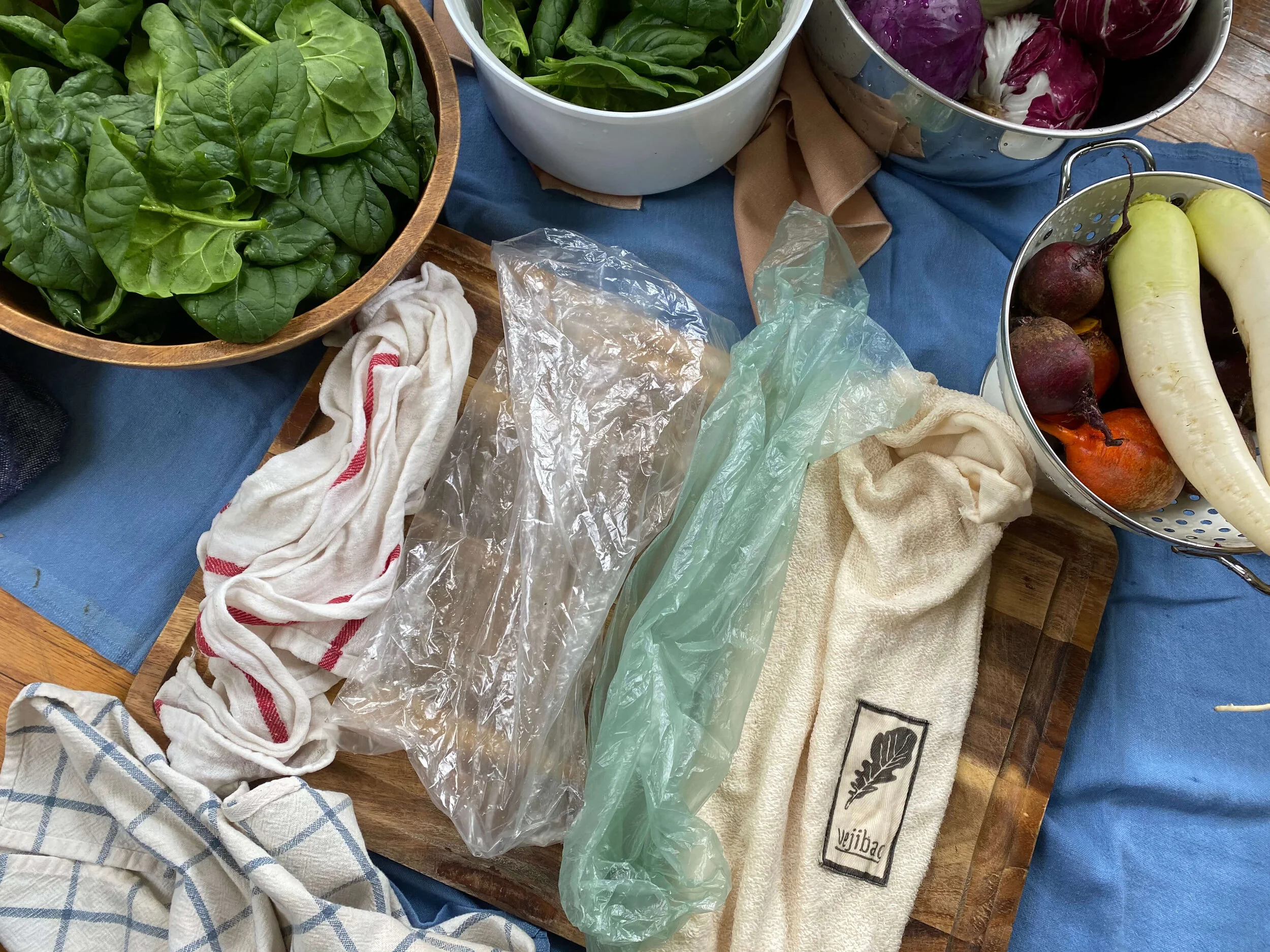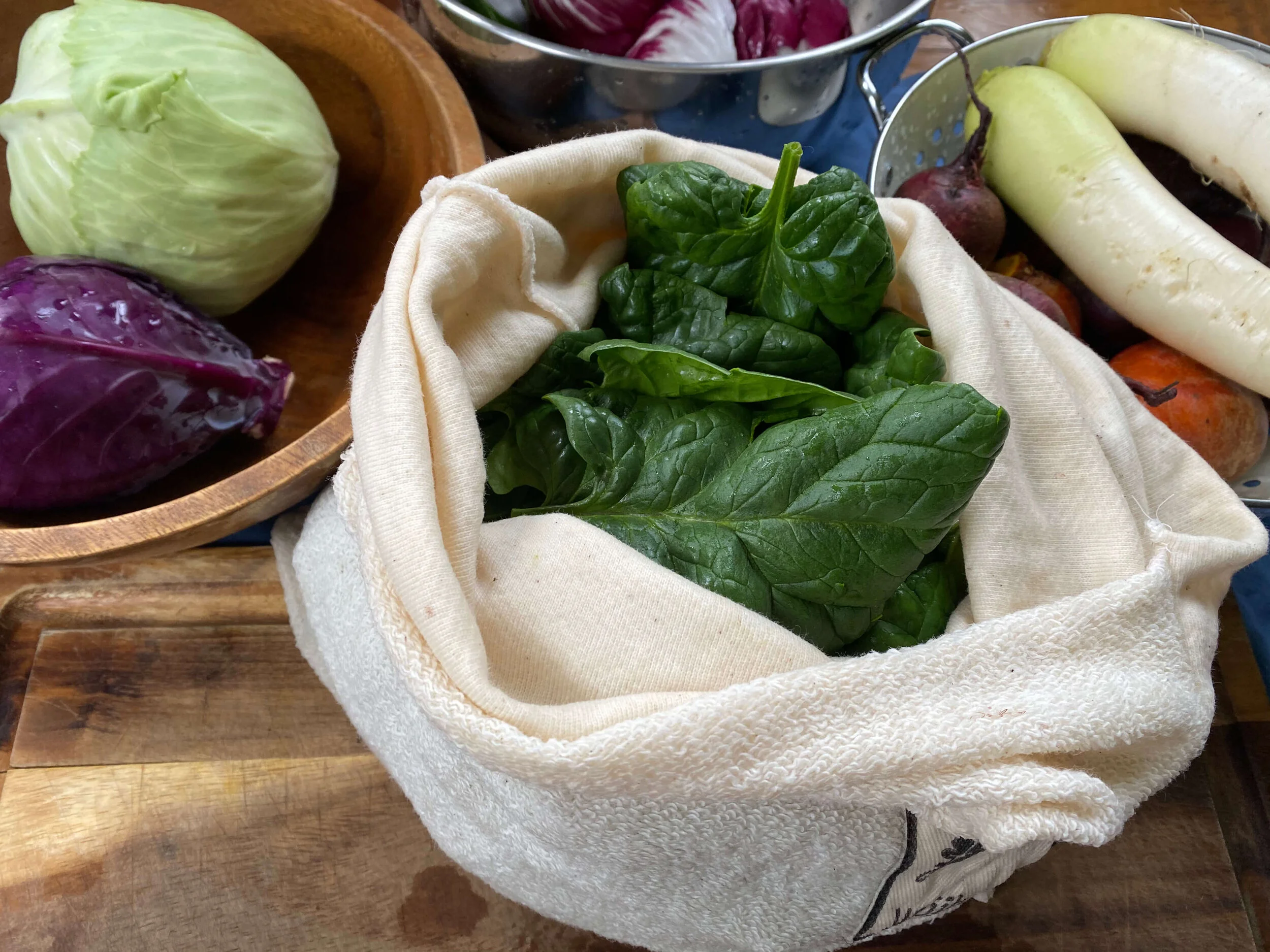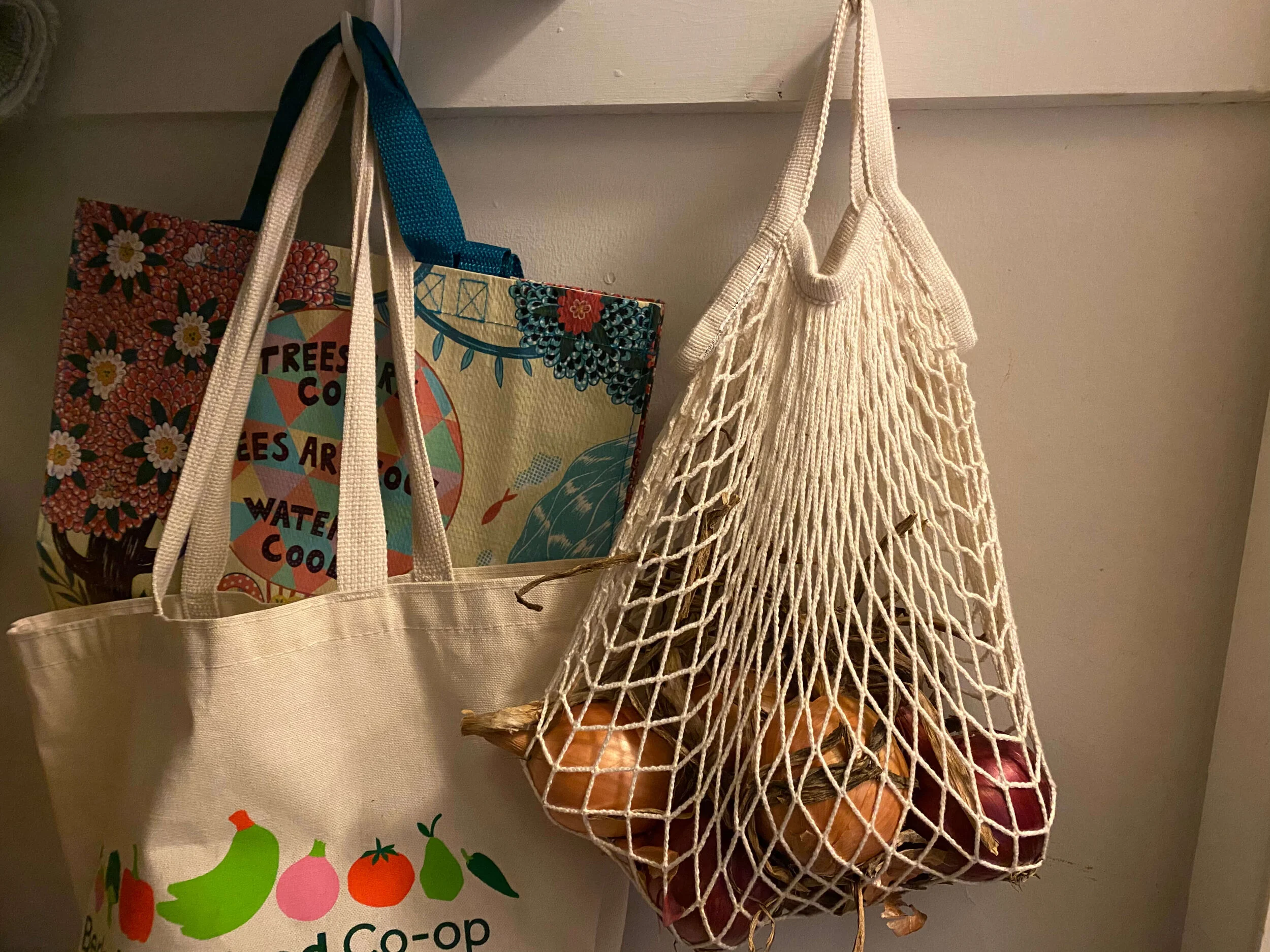How to store your CSA veggies
Post-harvest care of veggies is extremely important to us at Woven Roots Farm. We utilize many techniques to ensure our veggies are harvested for the CSA with vitality and nutrients.
Here are seven tips on how to make the freshness last!
Tip 1: Longevity of Your Produce starts with the right tools
Most of all of your greens that are going to be stored in the fridge will fare better with a little moisture. Vegi-Bags are our preferred cloth bags for storing produce (and they can be found locally at One Mercantile in Great Barrington!), because, when dampened, they will help keep your greens from drying out. Large dampened dish towels, knotted at the ends, also work. Alternatively, you can reuse (and reuse, and reuse, and reuse) plastic produce bags from the grocery store or zip-locks. If you’re using a plastic bag, dampen a cotton kitchen towel and place it on the bottom of the bag for the same effect.
Delicate greens like cut salad mix to be damp but not TOO damp, so a salad spinner comes in handy; get them as dry as possible before storing, and skip the dampened towel. Spinach doesn’t need to be spun quite as dry, but again, skip the towel. Root veggies like to be kept in airtight bags, so zip-lock bags or twist ties are helpful. Lastly, we’ll often offer produce that likes to live in breathable mesh bags or open baskets. Continue below for the full run-down.
Tip 2: How to Store Greens
When we refer to “greens” these are what we mean: Arugula, Collards, Dandelion, Escarole, Frisee, Kale, Lettuce, Mustard Greens, Pac Choi, Parsley, Spinach, Swiss Chard, and Root Vegetable Tops (see below for separating and storing root veggies and their greens).
For lettuce heads and radicchio rinse, but keep heads intact to store until you are ready to use them. If you take them apart to wash and store, treat the leaves as you would the fussier greens like spinach, salad mix, and arugula. For these, rinse in a colander and dry before placing in a bag (preferably via light spinning in a salad spinner). These greens like to live with some humidity but don’t want to sit in any excess water which causes them to get water-logged and rot quickly. Also, make sure greens aren't placed near any really cold spots; they’re happiest in a crisper bin or on a low shelf towards the front of the fridge.
Pro-tip: Peas and beans like it dry and cold. Put these away without a rinse in a reusable sealed bag like a zip-lock.
Tip 3: How to Store other fridge-dwelling veggies
Cauliflower, Cabbage, Celery, Cucumbers, Eggplant, Daikons, Dill, Scallions, Radishes, Rhubarb, Fennel, Leeks, Peppers, and Zucchini & Summer Squash are all relatively low maintenance. These are veggies that do well in those cloth produce bags we talked about. All of these appreciate a quick cold refreshing rinse after their journey home from the farm and will keep in the fridge for a couple of weeks.
Tip 4: How to Store roots
Root veggies like carrots, beets, and turnips sometimes come with edible tops. When processing these vegetables, separate the greens from the root just at the base of the stem. store the tops as you would your other greens. Beet and turnip greens are great in stir-frys and soups, and who doesn’t love a carrot-top pesto!?
As a general rule of thumb, roots will store better if they’re not washed. At the farm, we do a quick initial rinse so you don’t muddy the rest of your CSA share, but there’s no need to fuss over the roots too much before storing. Better not to scrub and trim and peel until you’re ready to use them. They like a sealed bag to help them retain moisture, but again, any excess water will promote rot, so drain completely in a colander before storing.
tip 5: veg that likes it cool and dark
Onion, Shallots, Garlic, and Winter Squash don’t like it bright and warm, and they don’t need to be in the fridge. Find a place they can stay in the dark and cool until you are ready to use them (think pantry or basement). Breathable mesh bags or open baskets are good options for these vegetables.
tip 6: countertop success
Slicing tomatoes and cherry tomatoes can hang out with you as you cook. Just make sure that larger slicing tomatoes are placed upside down on their shoulders, since the shoulders are the last to ripen. This way, the tomato is less likely to get bruised and spoil. Those cool and dark veggies like onions, shallots, garlic, and winter squash can hang out on the counter, too, as long as the space isn’t too warm. These are typically “harvest time” vegetables so as we move into the colder months our kitchens become more hospitable to them.
tip 7: ask us!
We spend a lot of time with these veggies so we know how to help. If you’re finding that food is passing its prime before you get to it, preserving and freezing are good options. Some produce, of course, will not freeze well or doesn’t make a good preserve, so we can help you prioritize what should be eaten first when it’s freshest.




